Far North Snapshot: Eight companies venturing into the remote north for minerals
Although there are many examples of fabulously rich gold, diamond and base metals mines that have been developed in the Far North, the mineral potential of the northern reaches of Canada, the U.S., and Europe remains largely untapped. Here are eight exploration, development and mining companies active in the Arctic and near-Arctic.
BMC Minerals
Vancouver-headquartered BMC Minerals, wholly owned by privately held, U.K.-based BMC Ltd., is developing the Kudz Ze Kayah base metals project in southeast Yukon. The polymetallic project was recognized by BMC as a development opportunity in 2014 and acquired the following year from Teck Resources (TSX: TECK.A/TECK.B; NYSE: TECK).

The region is known to contain significant volcanogenic massive sulphide deposits and large sections of ground within the property remain underexplored. The company is mainly focused on the ABM Zone, which hosts probable reserves of 15.7 million tonnes grading 5.8% zinc, 1.7% lead, 0.9% copper, 138 grams silver per tonne and 1.3 grams gold.
Mining of the ABM deposit is anticipated primarily by open pit methods with a small underground mine proposed to exploit the deeper section of the Krakatoa Zone, which was discovered by BMC during field work following the acquisition of the property.
A low strip ratio of 6:1 in initial open pit mining will facilitate rapid capital payback in the early stages of the nine-year mine life, while an average 10:1 strip ratio is anticipated for the life-of-mine operation.
A prefeasibility study (PFS) completed in 2017 confirmed that Kudz Ze Kayah is technically and economically viable. The PFS was followed up by a feasibility study that was completed in June 2019 and updated in November 2020.
The Yukon Environmental and Socio-Economic Assessment Board (YESAB) issued a final screening report for the project in October 2020, which was positive, but listed 30 mitigation measures and six monitoring measures. Both levels of government have been consulting with the Kaska First Nation on the terms and conditions. Once a decision document from the federal and Yukon governments is in hand, the company will start the permitting and licensing process, which it anticipates will take two years.
BMC plans to produce three concentrates to be transported using an existing 905-km road network from the mine site to the port of Stewart, British Columbia, for sale and transport to Canadian and export markets. The peak construction workforce is estimated to number 670 with 320 employed once the mine is in operation.
According to the updated feasibility, the project carries a preproduction capital cost of $376 million and will produce 7.8 million oz. of silver, 56,500 oz. of gold, 235 million lb. of zinc, 32 million lb. of copper and 56 million lb. of lead each year in concentrate during steady-state operations. The study estimated Kudz Ze Kayah’s after-tax net present value at $617 million, based on a 7% discount rate, and its internal rate of return at 45.9%.
Mawson Gold
Mawson Gold (TSX: MAW; US-OTC: MWSNF) is a Vancouver-based exploration company with properties in Finland and Australia. The company’s 100%-owned Rajapalot gold-cobalt project covering 179.9 sq. km, is located just south of the Arctic Circle in Finland’s Lapland region.
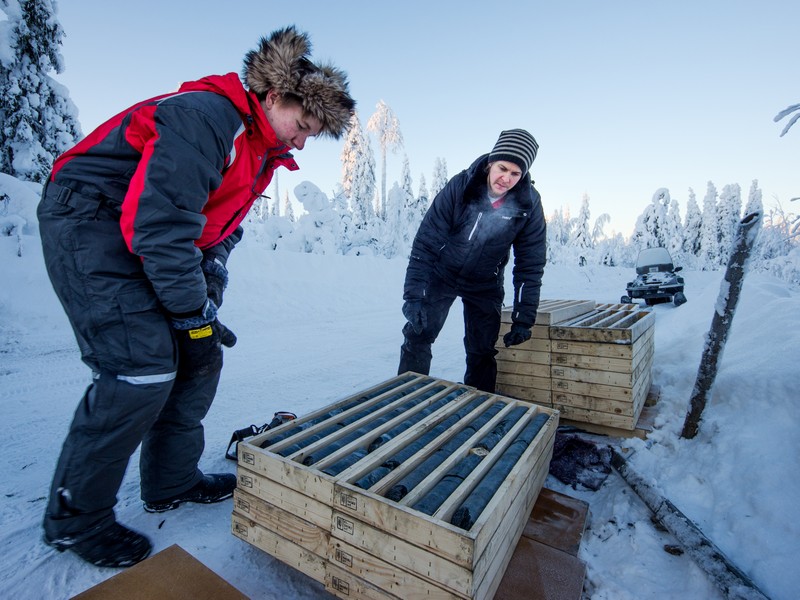
In August 2021, the company reported an inferred mineral resource of 10.9 million tonnes grading 2.5 grams gold per tonne and 443 ppm cobalt (or 3 grams gold equivalent) for 887,000 oz. of gold (1 million oz. of gold equivalent). The updated resource estimate increased the project’s gold grade by 19% and contained gold ounces by 47% compared to a previous September 2020 estimate.
The Rajapalot project forms part of Mawson Gold’s larger 100%-owned, 100-sq.-km Rompas-Rajapalot Finnish project area.
Mawson’s 2021 winter exploration program included 84,507 metres of drilling at Rajapalot with an average depth of 155 metres. The updated resource was based on a total of 330 holes totalling 72.8 km and drilled to an average depth of 250 metres. (The 2020 resource estimate was based on 257 holes totalling 53.8 km at an average depth of 209 metres).
Mawson is working on its first-ever preliminary economic assessment for Rajapalot, which is due out in the third quarter.
“The commencement of a maiden PEA marks an important step towards Rajapalot joining its developer peers,” said Mawson Gold CEO Ivan Fairhall in a release. “This is the first time the favourable geology, metallurgy and location of our million-ounce Rajapalot inferred mineral resource estimate will be articulated to the market as a coherent business case.”
Mawson’s wholly-owned Finnish subsidiary, Mawson Oy, has received two rounds of funding from the Finnish consortium’s BATCircle program aimed at promoting the discovery and development of battery metals. The company was granted €500,000 ($527,000) as part of BATCircle1.0 and an additional €795,000 ($838,000) in funding as part of BATCircle2.0 to further study cobalt extraction, marketing and residues management.
The company has engaged SRK Consulting Finland to develop open pit and underground designs and schedules, as well as mine infrastructure and associated cost estimates.
Mawson has an interest in several properties in Australia through Southern Cross Gold, a company it incorporated in July 2021 and that it plans to list on the Australian Securities Exchange this year.
Nighthawk Gold
Nighthawk Gold (TSX: NHK, US-OTC: MIMZF) is a Canadian-based gold exploration company that holds more than 930 sq. km of a district-scale land position within the Indin Lake Greenstone Belt, located approximately 200 km north of Yellowknife in the Northwest Territories.
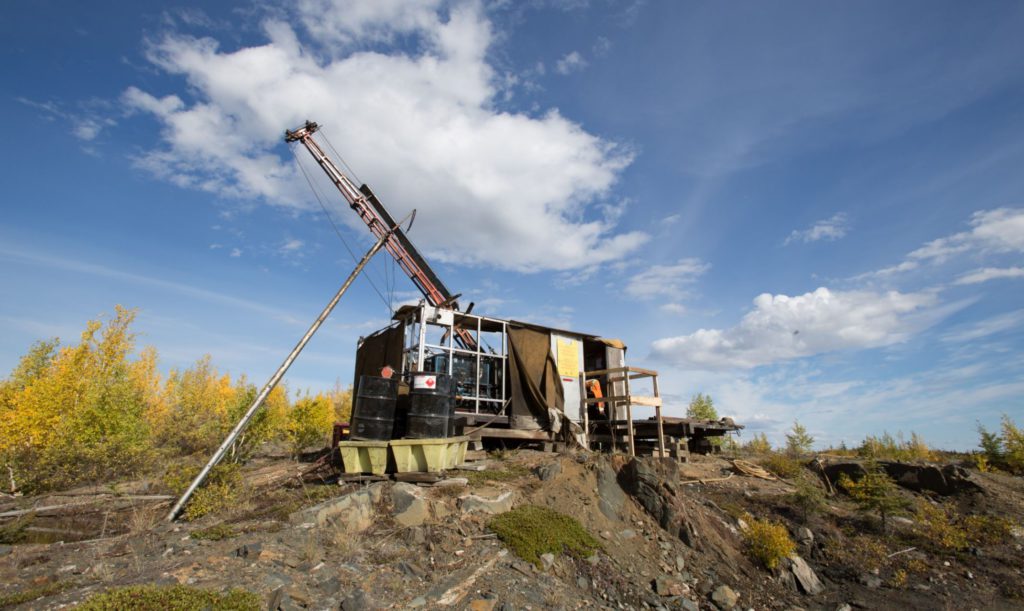
The land package lies along the West Bay-Indin Lake Fault Zone, a regional structure that extends over 200 km from Great Slave Lake to areas north of the Indin Lake Greenstone Belt. The fault zone hosts the Giant and Con gold mines that produced 13 million oz. of gold, and the Colomac mine that produced 527,908 oz. gold. Company management likens the potential of the structure to other fault zones such as the Destor-Porcupine Fault in the Timmins camp.
The Colomac Main Deposit, one of the historic open pit gold mines within the property, was acquired by Nighthawk in 2012. Nighthawk has advanced Colomac Main, four other adjacent deposits and four other higher-grade satellite deposits – Kim, Cass, Damoti and Treasure Island – that lie between 11 and 28 km from Colomac Main.
In March, the company reported an updated resource estimate that increased open pit indicated resources by 121% to 2.1 million oz. of gold in 46.4 million tonnes averaging 1.38 grams gold per tonne. The open pit inferred resource climbed by 1,400% to 601,000 oz. gold in 7.8 million tonnes grading 2.39 grams gold.
A 2022 exploration drilling program set to begin in May will focus on expanding near-surface, high-grade open pit mineralization at the Kim, Cass, Damoti, Treasure Island and other targets. Nighthawk’s camp is capable of accommodating up to seven drills and can be accessed by ice road and a 5,000-ft. airstrip.
The company has a current market cap of approximately $10.8 million.
Sabina Gold & Silver
Vancouver-based Sabina Gold & Silver (TSX: SBB; US-OTC: SGSVF) is advancing its 100%-owned Back River gold project, an 80-km long belt with a series of gold deposits in banded iron formation located in southwestern Nunavut, approximately 520 km northeast of Yellowknife. The project was purchased from Dundee Precious Metals (TSX: DPM) in 2009.
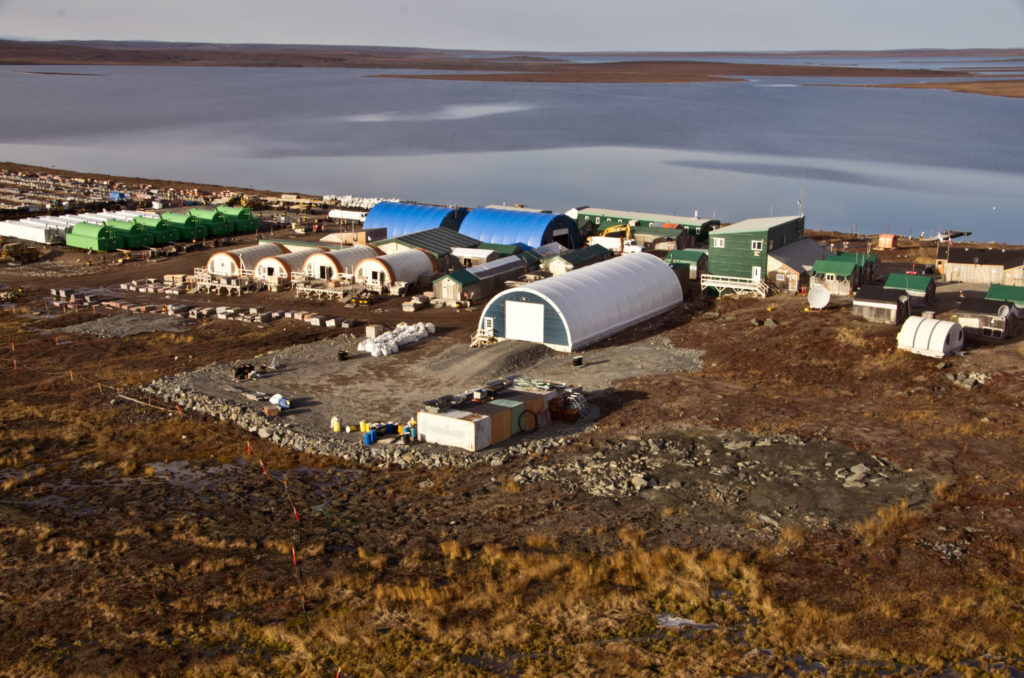
According to an updated feasibility study completed in 2021, the company’s Goose project, the first mine it hopes to develop in the district, will generate an after-tax internal rate of return of 27.7% and a net present value (at a 5% discount rate) of $860 million. A rapid payback of 2.3 years is expected, based on a gold price of $1,600 per oz. The initial capital requirement was estimated at $610 million, with life of mine sustaining capital and closure costs at $326 million.
The updated feasibility study was based on an initial processing rate of 3,000 tonnes per day with an expansion to 4,000 tonnes per day by the end of year two. The mine plan envisions average gold production of 287,000 oz. gold per year for the first five years and 223,000 oz. gold per year over a 15-year mine life at a cash cost of $679 per oz. gold and all-in sustaining costs of $775 per ounce. Approximately half of the mine production is expected to come from open pits with underground production scheduled each year of operation.
A total of 18.7 million tonnes are to be milled over 15 years for a total of 3.3 million oz. gold with a life-of-mine average grade of 6 grams gold per tonne and average metallurgical recovery of 93.4%.
Open pit and underground proven reserves at the Goose, Echo, Umwelt and Llama deposits total 8 million tonnes at 5.54 grams gold per tonne, with probable reserves at 10.7 million tonnes grading 6.29 grams gold. Cut-off grades range between 1.6 g/t gold and 4.1 g/t gold.
Sabina reports comprehensive project financing of more than $550 million is in place, consisting of a senior secured debt facility, a gold prepay facility and a private placement from Orion Mine Finance and a gold stream arrangement and private placement with Wheaton Precious Metals (TSX: WPM).
The project is in receipt of all major permits and authorizations for construction and operations. The company has signed a 20-year renewable land use agreement with the Kitikmeot Inuit Association and has committed to employment and business opportunities with its Inuit stakeholders. A 3,500-metre surface exploration drill program was conducted in March and April.
“We look froward to receiving the results of this spring’s drilling program as we continue to evolve and develop the resource potential at the 8 km long Goose Gold Complex,” said Bruce McLeod, president and CEO. “As we have demonstrated in past drilling campaigns, the gold endowment at Goose is exceptional and we remain committed to an exploration and resource growth and optimization strategy that we believe will add considerable value to the project as we progress towards production.”
Sabina Gold & Silver has a market cap of $623 million.
Trilogy Metals
Vancouver-based Trilogy Metals (TSX: TMQ; NYSE-AM: TMQ) is a 50% owner of the Upper Kobuk Mineral Projects (UKMP) consisting of a 1,814-sq.-km land package in the Ambler Mining District of northwest Alaska. In February 2020, a 50:50 joint venture was concluded with South32 Ltd. (LSE: S32; ASX: S32), a global diversified metals and mining company with a market cap of $10 billion that was spun off from BHP (NYSE: BHP; LSE: BHP) in 2015. Trilogy contributed all of its UKMP-associated assets to the jointly-owned Ambler Metals LLC while South32 contributed $145 million.
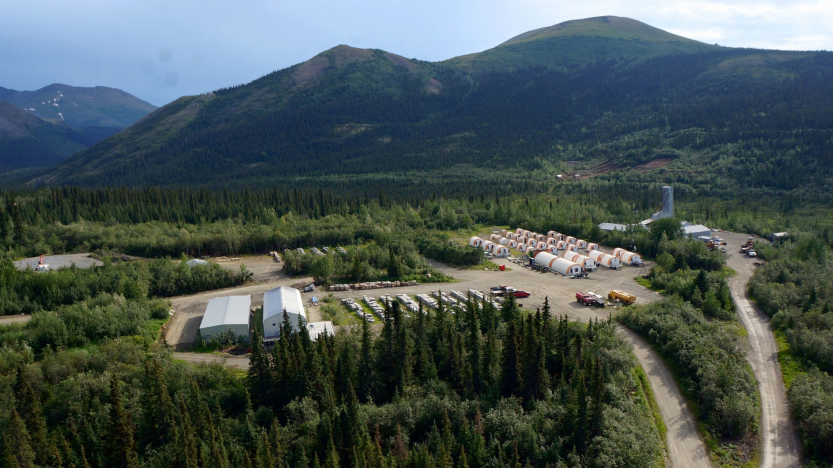
The UKMP hosts the feasibility-stage Arctic copper-zinc-lead-gold-silver volcanogenic massive sulphide project, described as one of the highest-grade copper deposits in the world with an average grade of 5% copper equivalent. It also hosts the Bornite copper-cobalt carbonate replacement project, located 25 km southwest of the Arctic project.
A February 2020 feasibility study on the Arctic project, located 470 km northwest of Fairbanks, Alaska, reported a base case after-tax net present value at an 8% discount rate of $860 million and an internal rate of return of 27.1%.
The initial capex for the open pit, 10,000-tonne-per-day operation was estimated at $704 million with sustaining capital of $88.5 million for total capital expenditures of $860 million over a 12-year mine life.
The study projected average annual payable production of more than 155 million lb. of copper, 192 million lb. of zinc, 32 million lb. of lead, 32,000 oz. of gold and 3.4 million oz. of silver.
The less-advanced Bornite deposit hosts an indicated resource of 955 million lb. of copper in 41.7 million tonnes grading 1.04% copper. Inferred resources include 5.3 billion lb. of copper in 144.1 million tonnes grading 1.68% copper, and 88 million lb. of cobalt in 185.8 million tonnes at 0.021% cobalt.
The JV is seeking approval for a 340-km industrial access road to the site, which would connect the project with existing road and rail infrastructure for the transport of concentrate to the Port of Anchorage, Alaska. In March, the right of way permits previously issued to the Alaska Industrial Development and Export Authority (AIDEA) for the project were suspended by the U.S. Department of the Interior, which wants additional work completed on the Final Environmental Impact Assessment. While it awaits a judge’s decision on the permitting, the company says it will go ahead with a $27 million, 10,000 metre drill program this summer at Arctic.
Victoria Gold
Victoria Gold (TSX: VGCX; US-OTC: VITFF) is the 100% owner of the Eagle gold mine in central Yukon. The open pit, heap-leach operation is located on the company’s 555-sq.-km Dublin Gulch property in the Tintina Gold Belt, 85 km by road northeast of Mayo and 491 km north of Whitehorse.
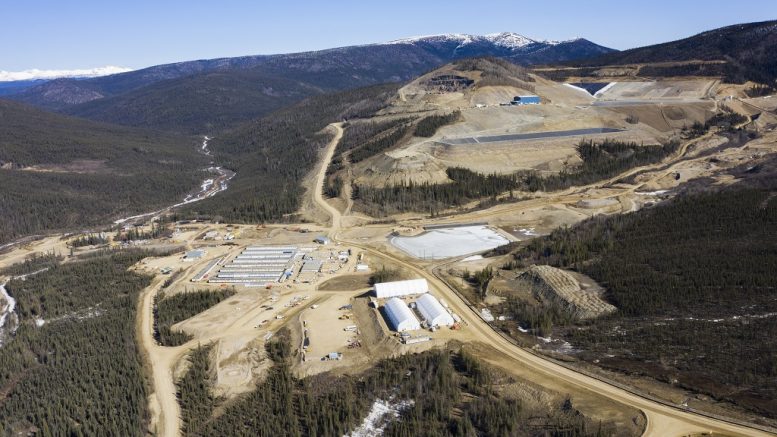
The company acquired the property in 2009, beginning drilling and other exploration work the same year. First gold was poured in the third quarter of 2019 and commercial production was declared July 1, 2020.
The company reported annual gold production of 164,220 oz. of gold in 2021, an increase of more than 40% over 2020 production. It aims to increase production to 250,000 oz. in 2023. Victoria Gold reported revenue of $276 million and net income of $84 million for 2021.
The Eagle mine has grid hydro power, year-round road access and a 300-person, all-season, well-equipped camp. Mine employees work a fly-in/fly-out rotation using a commercial air strip 80 km away, near the village of Mayo.
The Dublin Gulch property also hosts several other targets, including the Raven deposit for which Victoria Gold has budgeted $15.5 million for 25,000 metres of exploration drilling this year.
The Eagle and nearby Olive deposits contain proven and probable reserves of 2.7 million oz. of gold in 123 million tonnes of ore grading 0.67 gram gold per tonne. Measured and indicated resources are estimated at 191 million tonnes averaging 0.65 gram gold containing 4 million oz., inclusive of proven and probable reserves. Inferred resources add 24 million tonnes averaging 0.61 gram gold per tonne for 500,000 ounces.
Victoria Gold president and CEO John McConnell and the Victoria Gold team were the recipients of the Association for Mineral Exploration’s (AME) 2021 E.A. Scholz Award for excellence in mine development in British Columbia and the Yukon Territory.
Victoria Gold has a market cap of $746 million.
Western Copper and Gold
Western Copper and Gold (TSX: WRN; NYSE: WRN) is developing the Casino project, a porphyry copper-gold-molybdenum deposit located in west-central Yukon, 300 km northwest of Whitehorse. The property lies within the Whitehorse Mining District and consists of 1,136 full and partial quartz claims covering an area of 211.3 sq. km, and 55 placer claims encompassing 4.9 sq. km. Rio Tinto (NYSE: RIO; LSE: RIO) has a 7.8% stake in the company, which it acquired last year via a $19.9 million investment.

Based on a 2021 preliminary economic assessment, an open pit mine at Casino could feed a 120,000-tonne-per-day concentrator, and a 25,000-tonne-per-day gold heap leach facility for 25 years with a preproduction capital investment of $2.5 billion. The study projected a $2.2-billion after-tax net present value (using an 8% discount rate) and a 19.5% internal rate of return.
On-site processing facilities will produce a copper-gold concentrate, a molybdenum concentrate and gold and silver doré bars. A conventional open pit, truck and shovel operation is proposed with processing primarily by conventional milling to produce a concentrate. Some ore will be heap leached for gold recovery. Concentrate will be shipped to the Alaskan port of Skagway, 560 km from the mine site. An environmental and socio-economic project proposal was submitted for Casino in January 2014.
In February 2016, the Yukon Environmental Socio-economic Assessment Board determined that the project requires a panel review. A feasibility study is expected to be submitted by June of this year and an environmental and socio-economic statement is scheduled for submission in the second quarter of 2023. Since an initial feasibility study in 2013, changes have been made to the project to reduce the amount of water that would be held in the tailings impoundment to alleviate concerns about the size of the tailings impoundment and any potential failure.
Western Copper and Gold reports a resource of 7.6 billion lb. of copper and 14.5 million oz of gold in the measured and indicated category in 2.4 billion tonnes grading 0.14% copper and 0.19 gram gold per tonne. Inferred resources add 3.3 billion lb. copper and 6.6 million oz. of gold in 1.5 billion tonnes at 0.1% copper and 0.14 gram gold.
Western Copper and Gold has a market cap of $342.8 million.
White Gold Corp.
White Gold Corp. (TSXV: WGO; US-OTC: WHGOF) is a Canadian gold exploration company operating in the prolific White Gold District south of Dawson City in northwest Yukon, site of the historic Klondike Gold Rush. The district is an emerging gold camp with more than 20 million oz. of historic placer gold production and 20 million oz. of defined gold resources.
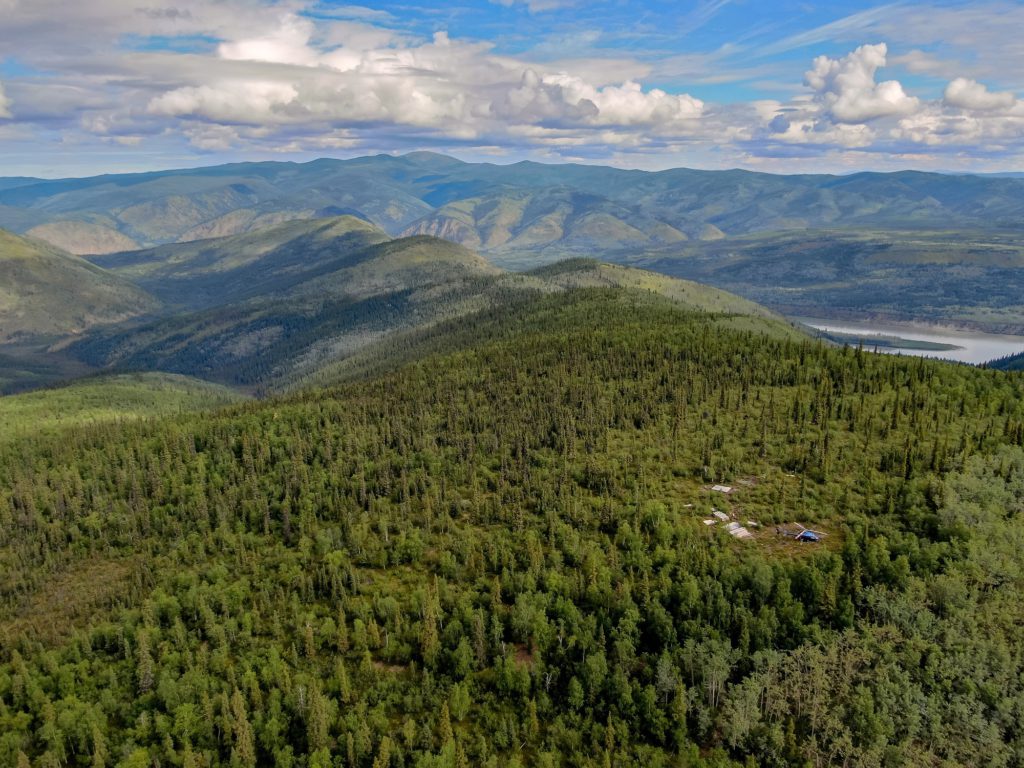
White Gold owns a portfolio of 21,111 quartz claims across 31 properties covering more than 4,200 sq. km, accounting for 40% of the district. Its flagship Golden Saddle and ARC deposits collectively contain indicated resources of 1.1 million oz. within 15.6 million tonnes averaging 2.28 grams gold per tonne, and inferred resources of 402,100 oz. within 9 million tonnes at 1.39 grams gold with mineralization remaining open along strike, down-dip and down-plunge. Its VG deposit, acquired in March 2019, contains an inferred resource of 267,000 oz. gold in 5.3 million tonnes grading 1.62 grams. Most of its resources are near surface and, therefore, conducive to open pit mining.
Exploration highlights include multiple high-grade gold intervals such as: 72.81 grams gold per tonne over 6.1 metres from 10.7 metres depth, including 136 grams gold over 3.1 metres; and 23.44 grams gold over 24.4 metres from surface.
Regional exploration work has produced several new discoveries and prospective targets on the company’s claim packages, including its Ryan Surprise, Betty Ford and Ulli’s Ridge targets. Nearby gold projects include Newmont’s Coffee gold project and Western Copper and Gold’s Casino copper project.
Strategic shareholders include Kinross Gold (TSX: K; NYSE: KGC) with 17% ownership, and Agnico Eagle Mines (TSX: AEM; NYSE: AEM) with 19.9% ownership following the closing in December 2021 of a non-brokered private placement for aggregate gross proceeds of $7 million. The company is planning its 2022 drill program, which will be 100% funded by its partners.
“We are very grateful for the continued support of Agnico and our other shareholders and are now fully financed for what we expect to be another exciting and impactful exploration program in 2022,” said White Gold CEO David D’Onofrio. The company was co-founded by prospector Shawn Ryan, who made the Coffee discovery.
White Gold has a market cap of $64.6 million.
{{ commodity.name }}
{{ post.title }}
{{ post.date }}

2 Comments
John Q Public
Gertler shouldn’t be given a pass. He will just go and corrupt another poor African country.
bill braden
Hello Mining.com. Re: Far North Snapshot: Eight companies venturing into the remote north for minerals
Norm Tollinsky | April 29, 2022: Your list is somewhat incomplete!
I’d like to point out a new producing mine in the NWT (Canada) that last year began mining and concentrating rare earth element (REE) ore at the Nechalacho Project southeast of Yellowknife. This is the first REE mine in Canada, operated by Cheetah Resources Corp (www.cheetahresources.com).
Parent company Vital Metals Ltd (www.vitalmetals.au.com) is building a $20 million extraction plant in Saskatoon, Saskatchewan, which this summer will begin further processing concentrate into a rare earth carbonate. This will be sold to REEtec of Norway for separation into individual rare earth elements.
Vital and Cheetah also have REE properties in Western Quebec.
There’s more and more happening in Northern Canada, appreciate the coverage.
Bill Braden
Media Relations Manager
Cheetah Resources